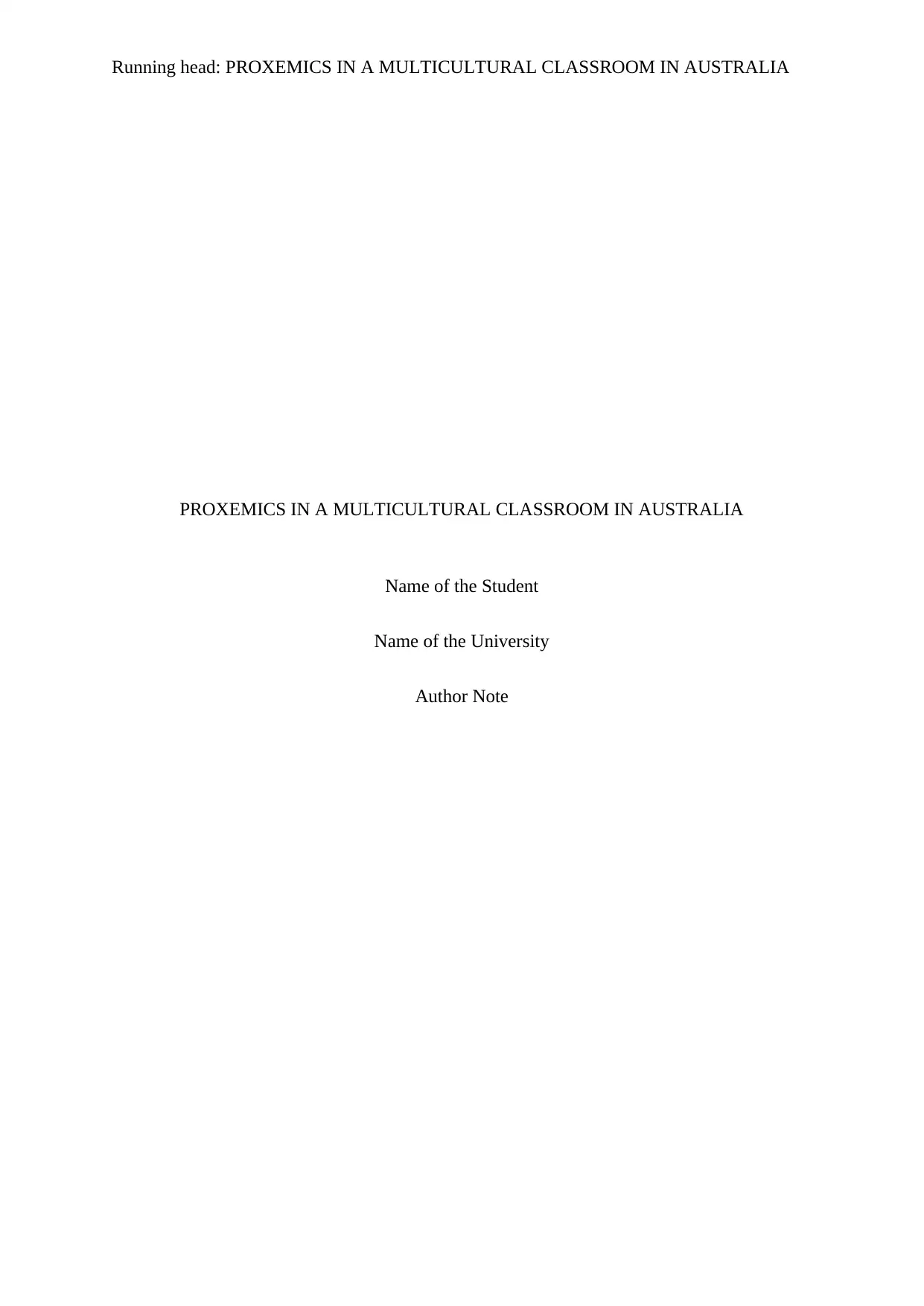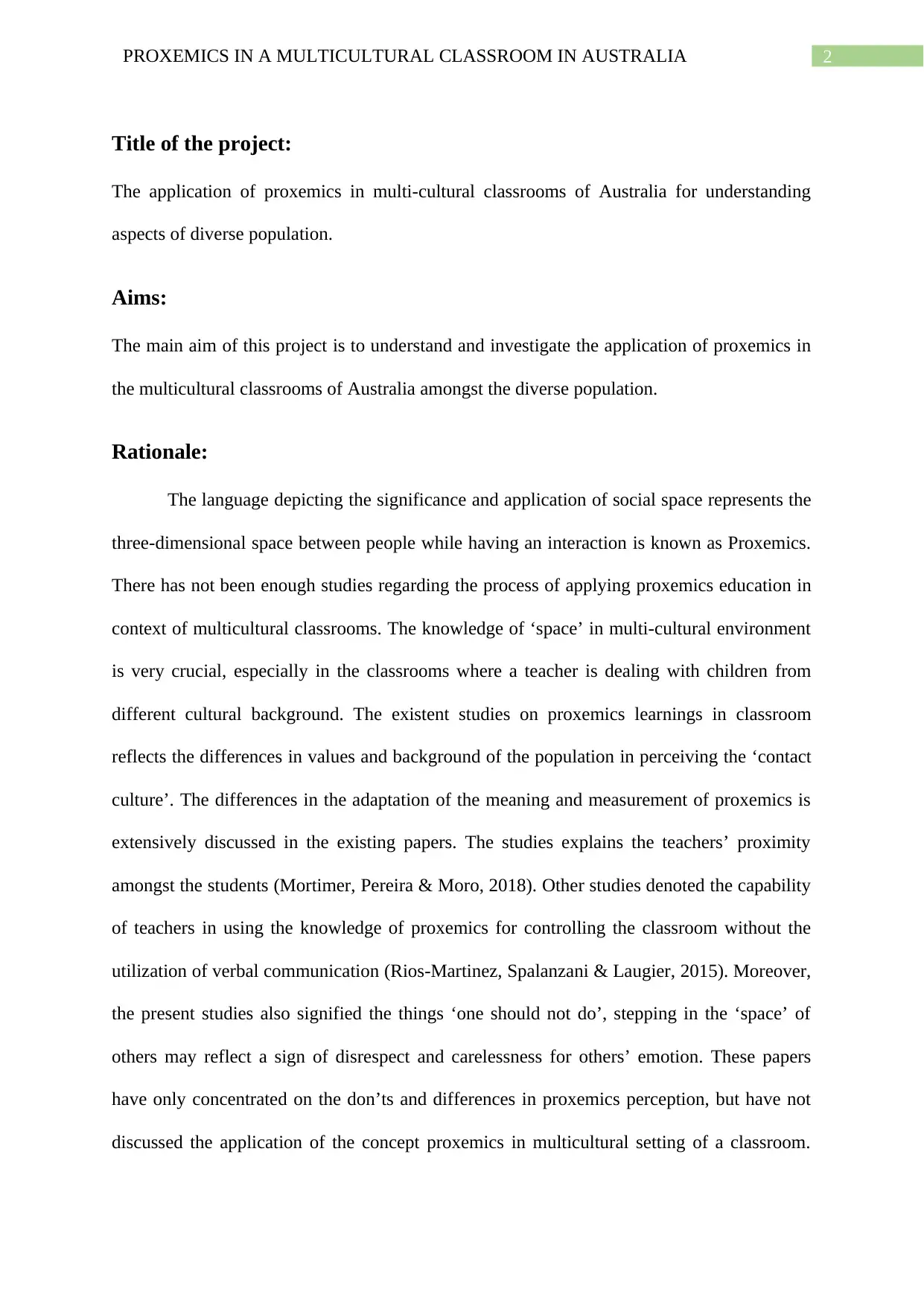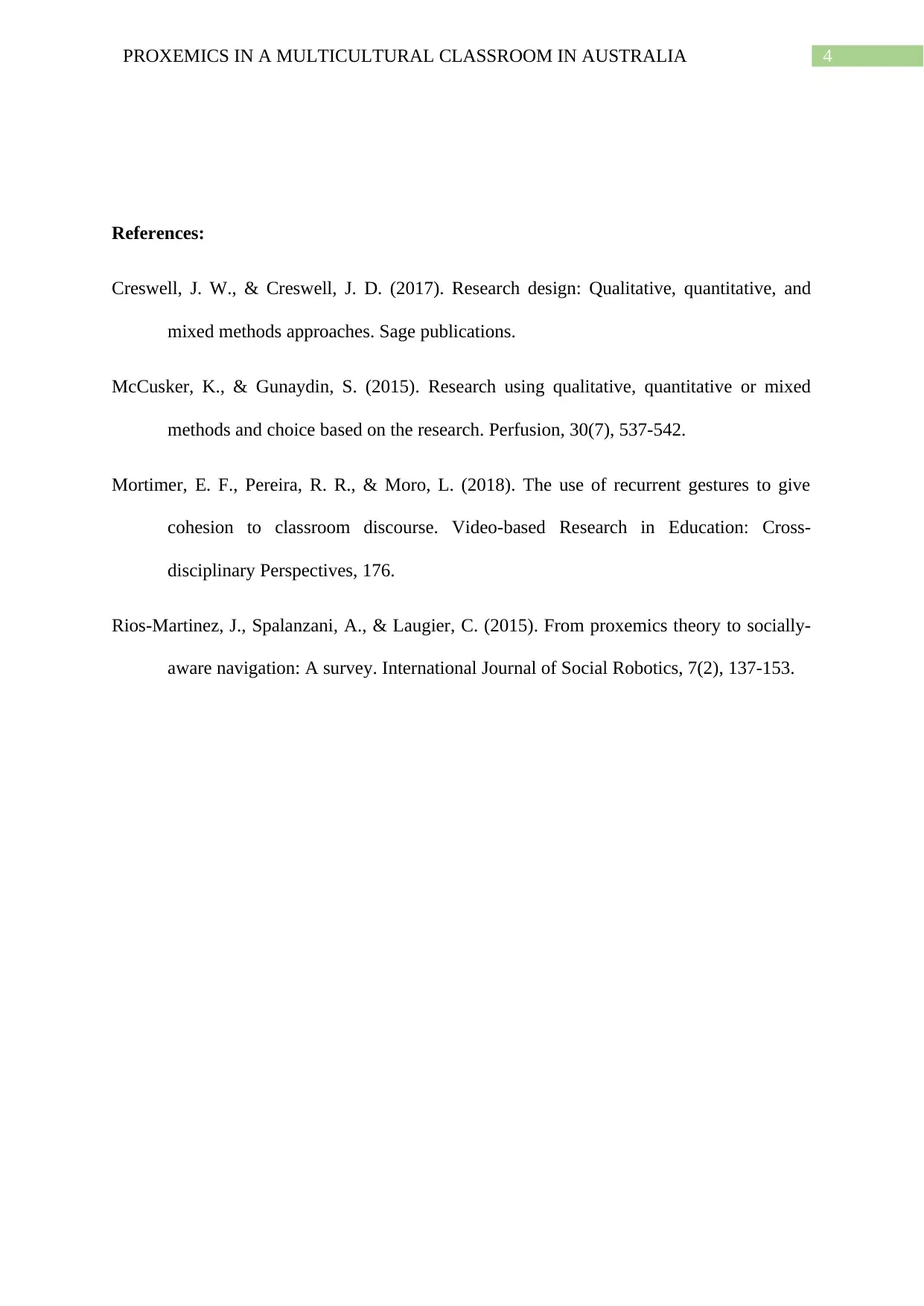Research Report: Proxemics in Multicultural Classrooms in Australia
VerifiedAdded on 2022/09/18
|5
|792
|32
Report
AI Summary
This report examines the application of proxemics in multicultural classrooms within Australia. It begins by defining proxemics and its significance in understanding the three-dimensional social space between individuals during interactions. The rationale highlights the limited research on proxemics education in multicultural classroom settings, emphasizing the importance of spatial awareness in diverse environments where teachers interact with students from varied cultural backgrounds. The report proposes a descriptive analysis using classroom observations to understand the practical application of proxemics. The research design utilizes a quantitative approach, focusing on observed behaviors of students and teachers to respect proxemic differences, without influencing the subjects. The methodology involves four steps: observation of verbal and non-verbal practices, data recording, description of results, and phenomenon classification. The study aims to answer how proxemics knowledge is applied in multicultural classroom settings in Australia, providing insights into the impact of cultural differences on social interactions within the classroom.
1 out of 5









![[object Object]](/_next/static/media/star-bottom.7253800d.svg)